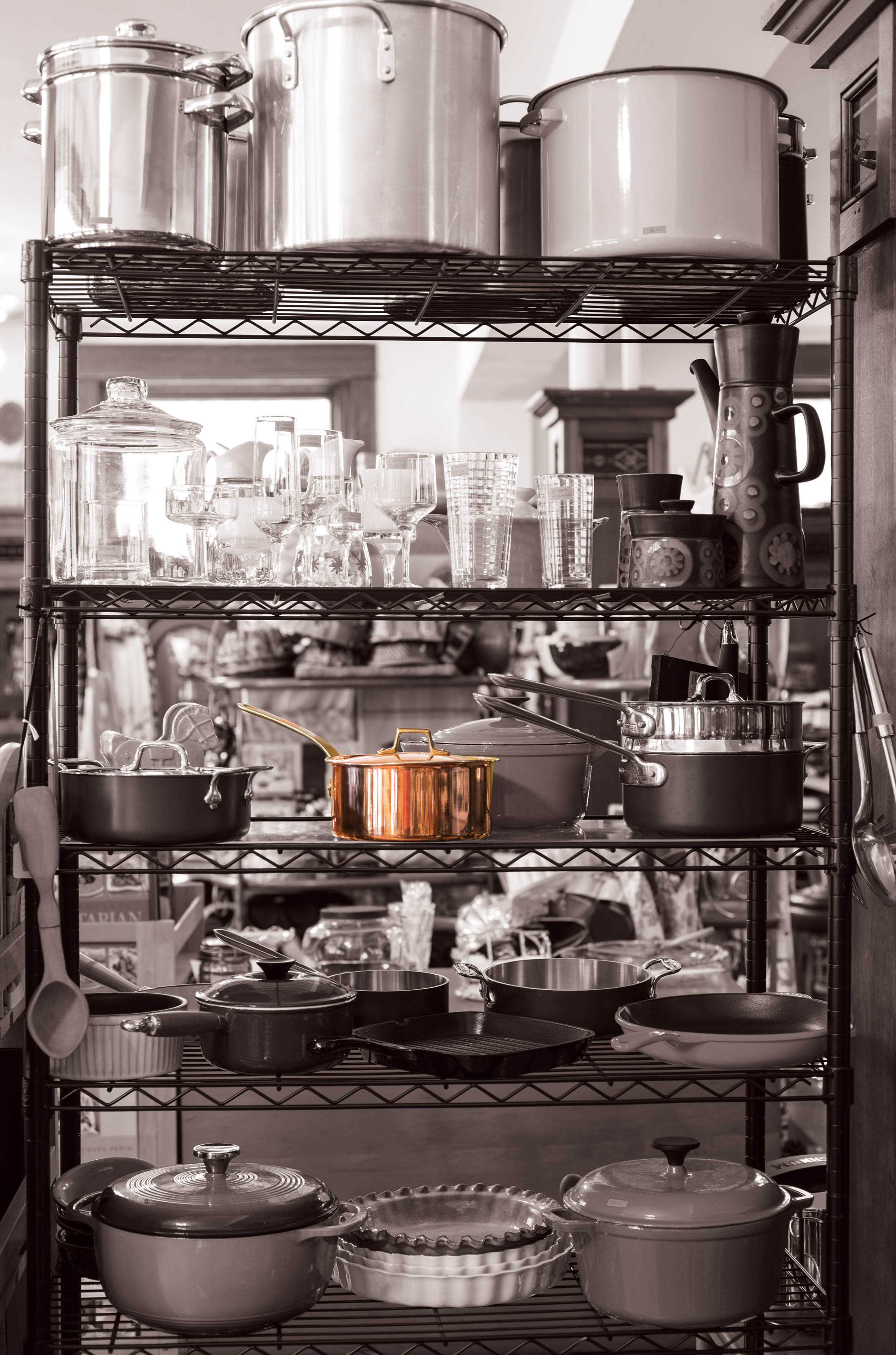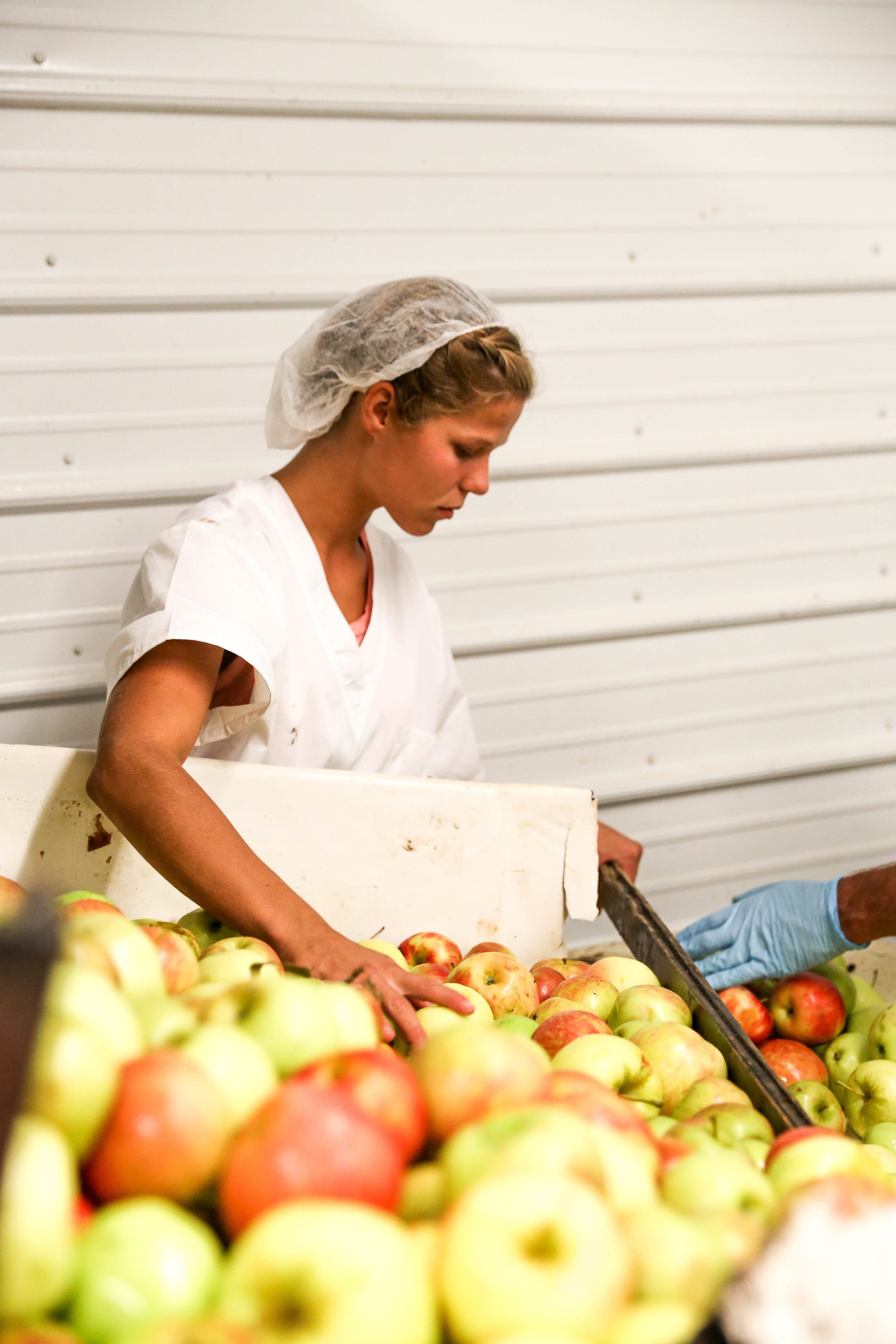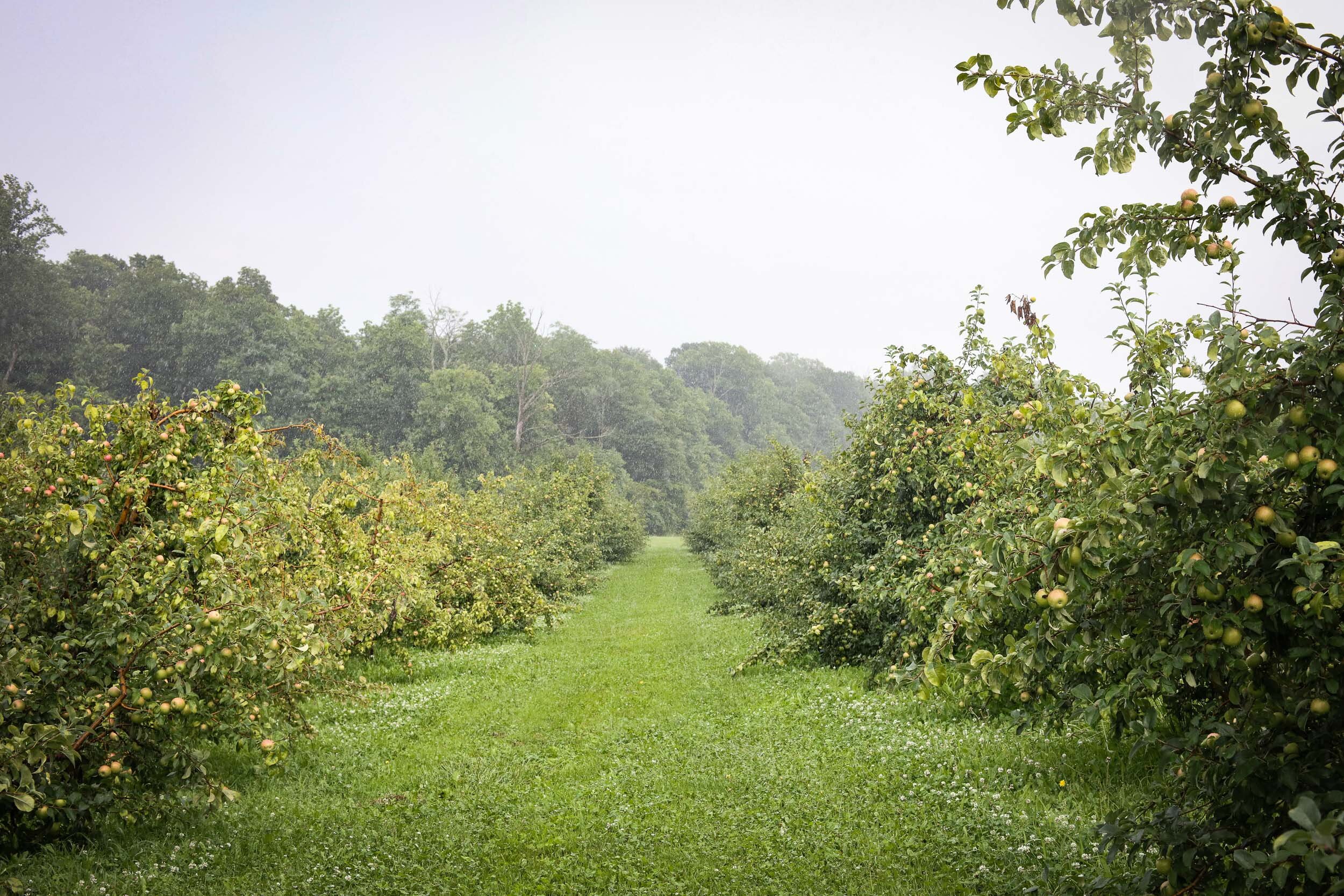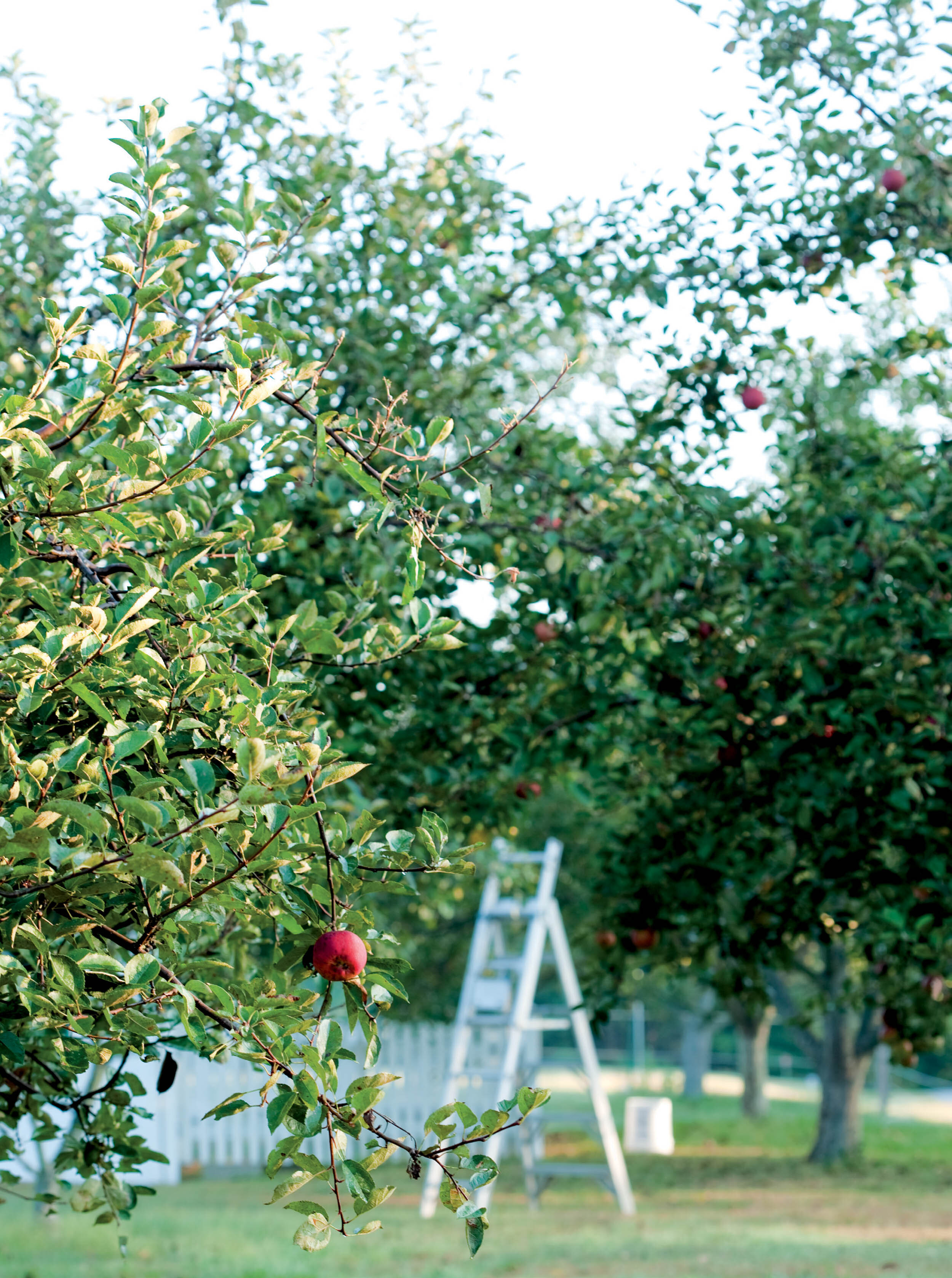A very rough guide to making hard apple cider

This is not a recipe. Read a book or two and find a recipe to work from. Or better yet, learn the ropes by helping out a cider-brewing friend.
Assemble your equipment & ingredients
If you’re working with fresh fruit, you will need a cider press. A tabletop press isn’t expensive, or you can use a juicer or blender. Buy or borrow a sealable fermenter. A glass carboy is great for fermentation, but a sealed bucket works too; just make sure you can clean and sanitize it thoroughly. If you are going to simmer your cider (don’t boil it), you’ll need a big pot. Potassium Metabisulfite or Campden Tablets can be used to kill off naturally occurring wild yeasts and microbes before adding your own yeast. This is a good idea for safety or ensuring a reliable fermentation, especially if you are using wind-fallen apples that have come into contact with the ground. Source some high-quality home brewing yeast. You’ll need an airlock and appropriate cork or bung to seal your primary fermenter, and, ideally, a thermometer, hydrometer, siphon, racking tube, and a “wine thief” (a tube with a ball-float in the bottom, which allows you to draw samples from your carboy to test specific gravity).
Clean and sanitize your equipment!
Every. Last. Piece. Debris can harbor microorganisms that will spoil a batch of cider, resulting in much weeping and gnashing of teeth. Use a tried-and-true sanitizer from your local home brew supply, which will sell a variety of no-rinse sanitizers.
Prepare, pulp, and press your apples
Chop your apples into quarters and pulp them. Grind them in a food processor and then use a tabletop press. Or you can use a heavy-duty juicer.
Prepare your cider
Many recipes call for simmering the cider (without boiling it). This is when you’ll add spices and sugars if the recipe calls for it. Fill the clean and sanitized fermenter. Take its temperature to ensure it’s in the safe range for your yeast; too hot and you risk killing the critters. Add your yeast (or starter, if you’ve followed directions to make one).
Seal your fermenter
And shake the jug to aerate and activate the yeast, then slap an airlock on it and store it in a dark place where the temperature remains consistent in the “target fermentation range” (again, refer to some actual instructions). Feel free to read your cider some poetry or play it folk music, but don’t disturb it.
Watch the Bubbles
After a couple of weeks, the bubbling in the airlock should subside, meaning fermentation is complete. The cider can be transferred off the yeast into a secondary fermenter where it can age for a longer period of time. Using sanitized equipment, transfer the cider to a clean and sanitized secondary fermenter. Leave as little empty space in the fermenter as possible to limit the presence of oxygen. You can also go straight to bottling or kegging if you choose. If bottling, ensure fermentation is finished by checking ABV with a hydrometer over the course of a week.
Age your cider
This is probably the most difficult stage of cider making, as it involves not drinking your cider even though you’re so close to the finish line. Left alone, the cider will ferment any residual sugars, develop character, and mature. Do some self-work during this time so that you feel more deserving of your cider when it’s ready. Depending on the recipe, a cider can be aged anywhere from a few weeks to months or even longer.
Bottle or keg your cider
And then—finally!—the time has come to quaff your cider. Call up some friends. Pair it with cheese—or, heck, just about anything. If possible, enjoy in front of a fire or under the stars.
Ever since his grandfather put him to work squashing potato bugs and shoveling compost in a vast organic garden north of Philadelphia, Cedric has loved the outdoors. These days, he squashes bugs for his green-thumbed partner, Jen. His writing has appeared in Saveur, Cincinnati, This Old House, and Belt magazines. He is the Collector at the Mercantile Library Downtown.





